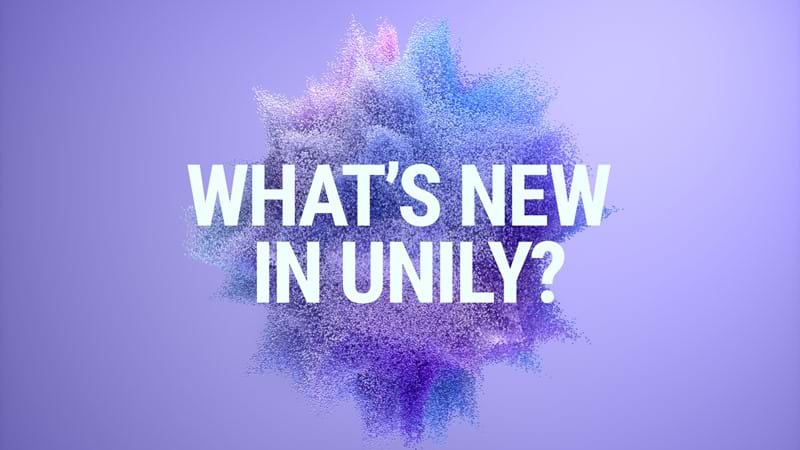Is your HR strategy still cutting the mustard?
HR leaders are at the forefront of shaping the new workplace. The rules are being rewritten, and old frames of reference no longer stand. In the face of so much change, what key principles can HR leaders look to to attract, retain, and nurture employees in the new world of work?

The next chapter of employee experience
COVID-19 didn’t just change how we work, it also changed how we think about work. With the transition from desk life to the home office came an evolution in the employee-employer relationship. Your people are no longer looking for top-down leadership but rather hoping to actively participate in an organization that values respect, inclusivity, flexibility, and a shared sense of purpose.
This paradigm shift has thrust employee experience into the spotlight. Rather than an afterthought, engagement strategies are now at the top of HR’s agenda. 64% of leaders in the field are prioritizing employee experience more now than they did prior to the pandemic.
Consequently, if employee experience wasn’t already on your radar in a big way, it’s about to be. With a 43% rise in the number of employees job hunting and the start of your next normal approaching, retaining and engaging your people will become crucial to your enterprise’s future success. But what does it take to keep employees happy in the new world of work?
6 HR rules for the new world of work
Even with the best technology at your fingertips, you need a strategic approach to enhance engagement in your next chapter. HR will lead the way in designing the blueprint for a compelling employee experience, but what does that actually look like? There’s a new set of rules which will shape the future of HR strategy, including:
#1. Prepare for the end of presenteeism
With the rise in remote work came the end of the strict 9-to-5. During the world’s largest work from home experiment, employers learned once and for all that they didn’t need to see their teams to know they were working, while employees enjoyed the ability to better balance personal and professional responsibilities.
Rather than a temporary benefit, radical flexibility is here to stay. According to Microsoft, more than 70% of workers want flexible options to continue, while Harvard Business Review reports that organizations that offer flexible working count 55% of their employees as high performers, compared to just 36% of employees at organizations with a standard 40-hour work week.
If presenteeism is still commonplace at your organization, it’s time to rewrite the rules. The next generation of new-hires will value flexibility over traditional attractors like pay and benefits.
To make radical flexibility a reality, employees need a centralized digital hub that empowers them to work anytime and anywhere, in addition to HR policies that support this model. Many enterprises are upgrading their intranets to give people the channels and information needed to power more flexible ways of working.
#2. Embrace digital-first employee experience
Technology isn’t just a component of employee experience anymore, it’s the backbone for it. The lockdowns and stay-at-home orders of 2020 accelerated a change that was already under way: the transition from your standard corporate campus to a digital headquarters.
As radical flexibility shapes tomorrow’s workplaces, the need to invest in digital tools will become even more crucial. From onboarding right through offboarding, every stage of the employee journey will need to be reconsidered to ensure that team members feel supported, whether they’re working from home, on the frontline or based in the office.
Many leaders have already recognized the need for a shared space that allows employees to connect, collaborate, and communicate. Even at a time when one-third of decision makers are anticipating budget cuts, 90% of HR executives are still planning to either maintain or increase their investment in technology.
#3. Can your culture
When offices were the heart of an employee’s daily experience of work, culture developed organically and was notoriously hard to define. As we move towards the hybrid work environment, HR leaders will need to reconsider how to maintain and nurture a distinct cultural identity without a physical hub for culture evolve. Since it’s well known that culture eats strategy for breakfast, getting culture right will be essential to managing change.
In the hybrid work era, digitization will take center stage in supporting enterprises in sharing and shaping their culture. In lieu of shared office space, the digital headquarters will be vital to managing the transition from office culture to remote culture. A digital platform that unites every employee in one place, such as the company intranet, will be the starting place for transitioning to a new cultural norm.
While this task may seem daunting, building a compelling culture in the new world of work presents HR leaders with an opportunity to review and reimagine the values that define their workplace ethos. It’s also a chance to close any existing gaps and replace them with a unified experience that connects employees across geographies and departments. The development of this type of inclusive and universal culture relies on finding a solution that supports two-way dialogues and enables employees to continue to play their vital role in shaping their organization.
#4. Take a stance on the issues your people care about
Silence is no longer an option when it comes to weighing in on social and political issues. More than three quarters of employees expect their employer to take a stance on the debates of today. Since job seekers are increasingly looking for organizations with cultural values that align with their own, what can you do to make sure your enterprise is living up to their expectations?
Creating a shared sense of purpose within your organization starts by developing a mission statement and giving your employees a platform to engage and discuss corporate values. If you're looking for inspiration, check out our own Culture & Values page. In addition to listing values and corresponding team representatives, there's also a Culture Conversations section so that everyone has a platform to share their insights.
#5. Upgrade mental health support
Conversations about workplace mental health have gone mainstream. During the height of the pandemic, many enterprises debuted new resources to support employee wellbeing, with 68% of organizations noting the addition of at least one wellness benefit since COVID-19.
Mental health will continue to be a hot topic in the new world of work. While adding benefits is certainly a step in the right direction, your people also need to understand how they work if you want to drive lasting change. This means working with your internal communicators to ensure resources and company messaging is effectively communicated. In a digital era, your company intranet can help get the word out and centralize the resources that are available for employees.
To take support for employee health to the next level, consider launching a dedicated hub on your intranet. Trivallis’s resource includes more than 150 user-written articles about mental and physical health and has contributed to a 46% reduction in stress-related absences since their intranet’s launch.
#6. Help your people upskill
With the average number of skills required for a single job growing by 10% year over year, it has never been more important for employees to expand their competencies. At time when top talent is in high demand, what can HR leaders do to encourage employees to upskill?
The secret to preparing your workforce for the demands of tomorrow is taking a dynamic approach that gets all stakeholders involved. When peers share accountability with HR to determine future skill needs, employees apply 75% of the new skills they learn, far more than with other approaches, according to Gartner.
To get the ball rolling, start by creating resources for employees who are looking to take their digital competencies to the next level. Our client Charles Taylor took innovative approach to upskilling by launching The Digital Ninja Academy, which employees can join to further their own technological knowledge and provide peer-to-peer support for their colleagues via their intranet.
Are you ready to launch an HR strategy that cuts the mustard?
As your organization prepares for the challenges of the new world of work, an innovative HR strategy will be essential to retain and engage employees. If you’re looking to leverage next-generation technology to enhance your HR approach, get started by seeing how Unily can help level up your strategy.
Get started. Get your free demo.
Reinvent your intranet for the employee experience era.
-
On-demand














